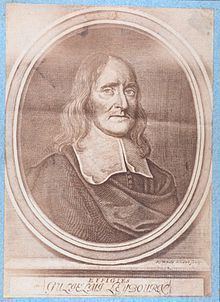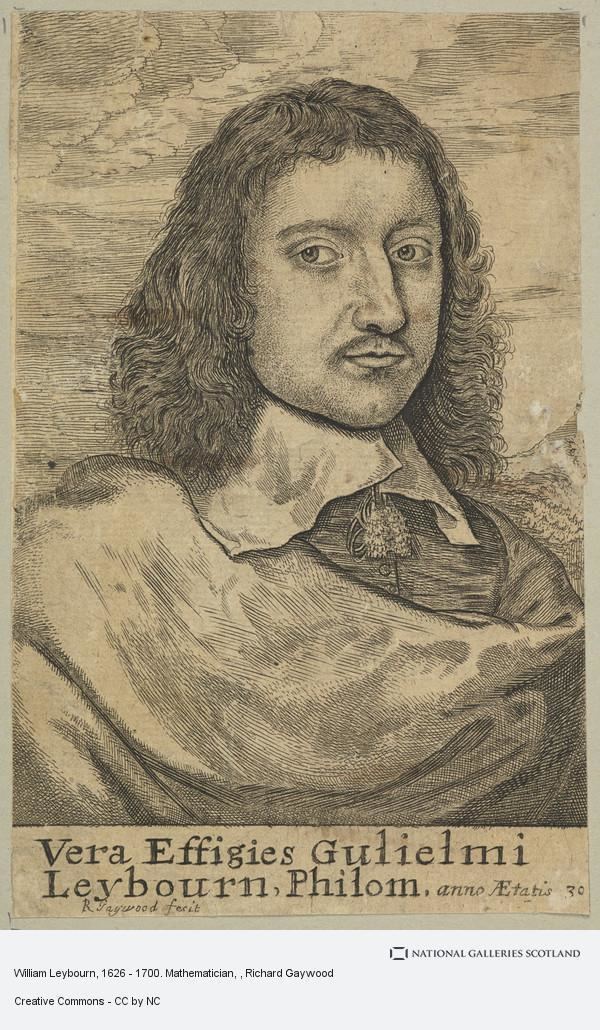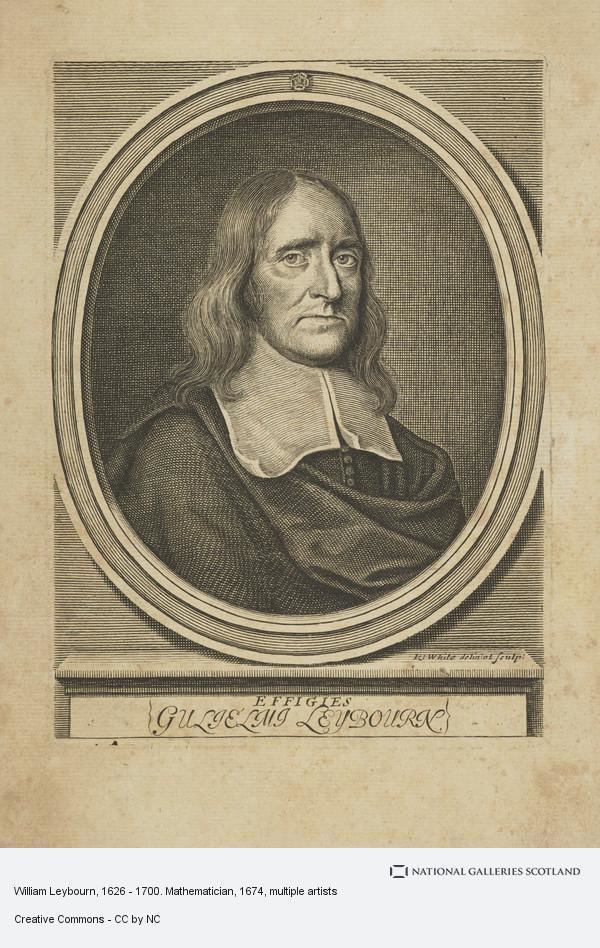Name William Leybourn Role Mathematician | Died 1716 Books Pleasure with Profit | |
 | ||
William Leybourn (1626—1716) was an English mathematician and land surveyor.
Contents

Career as a printer

In 1651 Leybourn entered into a business partnership with Robert Leybourn as a printer and seller of books. Leybourn's press would print the second and third editions of The Art of Dialling; by a new, easie, and most speedy way by Samuel Foster after Foster's death, with additions from previously unpublished manuscripts. The business was located in Cripplegate, and Leybourn lived there until the press closed down in 1665, after which he moved to Northcott in Southall, Middlesex.
Career as an author
In 1648, Leybourn wrote Urania Practica with Vincent Wing, the first substantial compendium of astronomy written in the English language. Leybourn's press would print other books of Wing's such as Geodaetes Practicus.
Planometria, or, The Whole Art of Surveying of Land was a pamphlet written in 1650 by Leybourn and published under the pseudonym Oliver Wallinby. Leybourn expanded this into a full book, The Compleat Surveyor which was first published in 1653, by his own press. This was the first book published on the subject that did not contain an extensive argument justifying surveying. The book outlined the various instruments used in surveying, and how they were employed. This book was one of the standard references in the field for the remainder of the 17th century and into the 18th century. The book instructed property surveyors on the construction of property maps, and how to make the appropriate coloured inks for the maps. At this time, the use of private estates maps was starting to become fashionable, to the extent that some very pleased clients would display the coloured maps for their guests to view. The book also contains instructions on mathematical measures. The section on the use of Gunter's chains as a unit of length shows early use of decimals in surveying. Leybourn would later expand and clairify this in his 1657 work Arithmetick, Vulgar, Decimal and Instramental.
In 1669 Leybourn authored The Art of Dialling, a book on the use of sun-dials and astrolabes in determining the position of vessels at sea. The contemporary expansion of the Royal Navy and Merchant Marines created a significant demand for such manuals, and The Art of Dialling was well written, easy to understand and cheaply produced.
Leybourn's 1693 work Panarithmologia, being a mirror for merchants, breviate for bankers, treasure for tradesmen, mate for mechanicks, and a sure guide for purchasers, sellers, or mortgagers of land, leases, annuities, rents, pensions, etc. … and a constant concomitant fitted for all men's occasions. remained widely printed longer than any other of his works. Over twenty editions were printed, and printing remained active into the 19th century.
Career as a surveyor
Leybourn acquired a good reputation as surveyor of land, and was often hired to survey the estates of gentlemen. In 1672, six years after the Great Fire of London, John Ogilby hired Leybourn to lead a survey of London. Leybourn identified the need for books that explained the techniques for measuring building materials that were widely accessible, both in cost and language. This was needed for both determining the extent of the damage from the Great Fire, and for calculating the cost of repairs.
It was believed that Leybourn was the designer of the emblem of the Bridge House Estates Trust, which was charged with maintaining the first stone bridge over the River Thames. The emblem, sometimes known as the "Southwark Cross" but actually the "Bridge House Mark" may have been adopted from a mark by Leybourn which was used on surveying maps to denote properties of the Bridge House in the 1550s, an earlier version in the London Museum on a stone of the Bridge is dated 1509, and the modern version can be seen as in use before his appointment on the City Sword Rest of 1674 now in Southwark Cathedral. The trust retains that emblem to this day.
